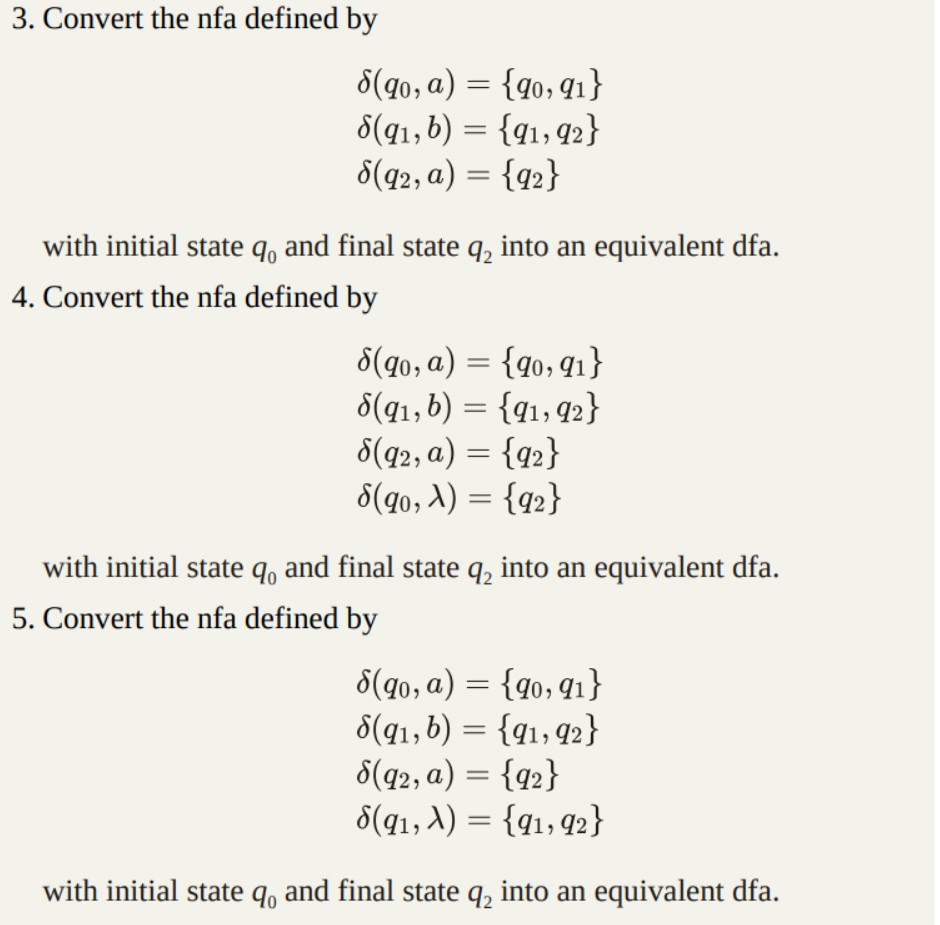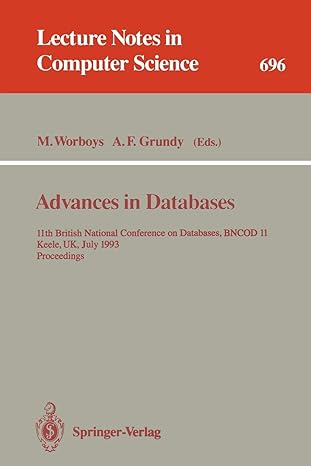Answered step by step
Verified Expert Solution
Question
1 Approved Answer
Convert the nfa defined by ( q 0 , a ) = { q 0 , q 1 } ( q 1 , b )
Convert the nfa defined by
with initial state and final state into an equivalent dfa.
Convert the nfa defined by
with initial state and final state into an equivalent dfa.
Convert the nfa defined by
with initial state and final state into an equivalent dfa.
Please do and and explain to me how to do it Thank you!

Step by Step Solution
There are 3 Steps involved in it
Step: 1

Get Instant Access to Expert-Tailored Solutions
See step-by-step solutions with expert insights and AI powered tools for academic success
Step: 2

Step: 3

Ace Your Homework with AI
Get the answers you need in no time with our AI-driven, step-by-step assistance
Get Started


